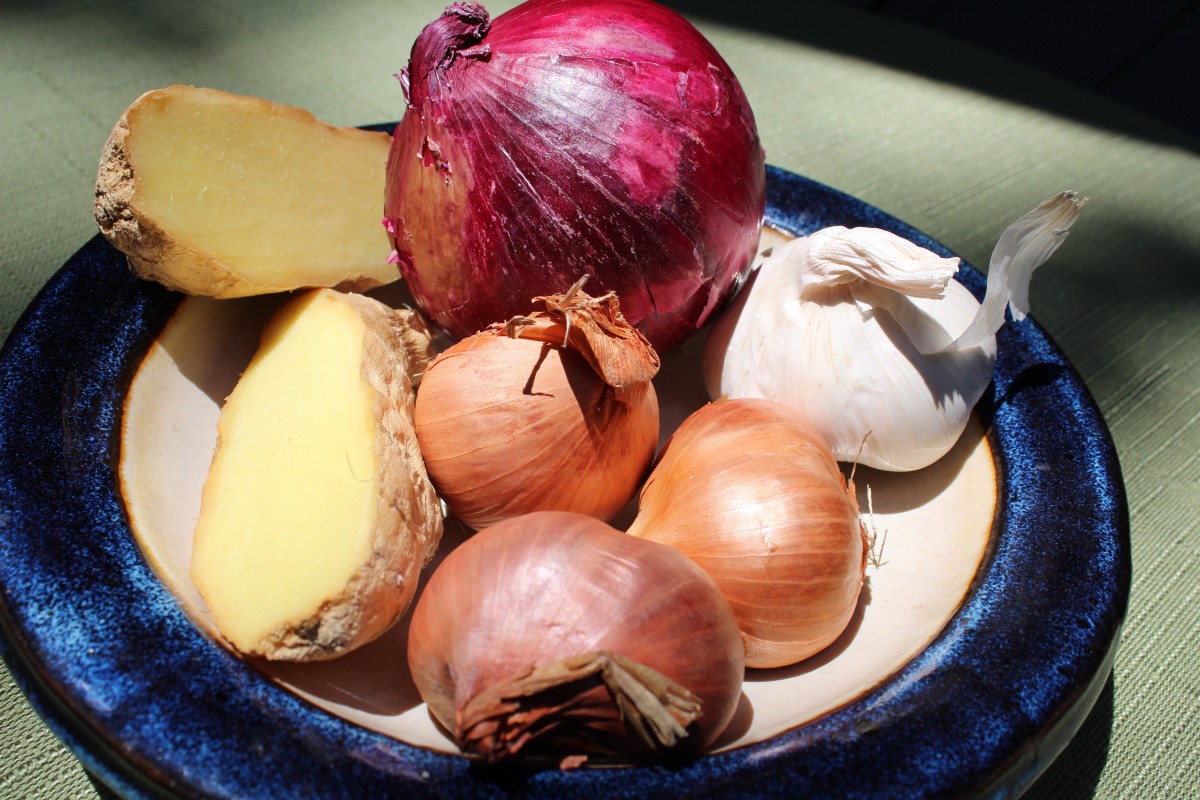
Balancing Flavors
The correct seasonings for any dish will enhance the flavor of the food and not compete or overpower.
When I teach cooking classes I find that seasoning and balancing flavors are what most people struggle with. If you’re not careful everything on your plate can taste the same or one flavor is completing overpowering. Seasonings are also a nice way to add nutrients to the dish. What does it mean to season? Seasoning is the process of adding or improving the flavor of food.
Here are some basics of the top five flavors:
- Salt. Since salt is added to so many processed foods, it’s easy for most people to get too much in their diets on a daily basis. It’s also the seasoning of choice for many. If you’ve added salt a little at a time during cooking, you may not need much at the end, but a little finishing dash of salt can boost the flavor of a bland dish, if needed. Be sure to use unprocessed sea salt and not table salt sold in most grocery stores. You now have many choices of wonderful salts.
- Sour. A splash of something acidic such as lemon, lime juice, or vinegar can really brighten the overall flavor of a dish. It is often best to add acidic flavors near the end of cooking, as they mellow with prolonged exposure to heat – this is especially true of citrus juice.
- Sweet. If a dish is too sour, you can add a dash of sweetener to balance it. Sometimes the natural sweetness of caramelized onions or red peppers, if appropriate to the dish, can be perfect, and add important nutrients as well. Similarly, sweet can help balance an overly salty dish. Please avoid sugar substitutes-not a healthy choice. Avoid anything artificial, period.
- Bitter. Most people are not typically looking to add bitterness to a dish, but are more likely to want to tone it down -think cream in coffee. Try a touch of sweetener or even salt to your overly bitter dish. If you want to add a little bitter, which can nicely balance and round out a dish, add lemon peel with some white pith to your seasonings. Bitter flavors are also thought to aid digestion.
- Umami. Umami is a savory taste and can round out a dish. Foods that offer Umami are mushrooms, anchovies, and Parmesan cheese. Many grocery stores will save and package rinds of Parmesan cheese, which are often in the delicatessen departments. Try adding the rind to your next soup recipe and notice the increased depth of flavor.
Also remember that the entire meal needs to be balanced, not just the individual dishes. Think about adding a dish that has a ‘bright’ flavor and cleanses the palate just a tad.
Besides herbs and spices, there are other fun ways to season. Here are some ideas for you to try.
Vegetable Reductions:
A reduction is a sauce in which liquid, generally wine-based is simmered on the stove, uncovered, until it reduces by 1/3rd or 1/2. You may also reduce almost any vegetable juice. If you like, you may simmer some onions, garlic, etc. in a small saucepan for a few minutes and then add the vegetable juice for added flavor. Use your imagination and experiment. Vegetable reductions are a wonderful way to add vegetables as sauces to your meals. Mushroom stock can be reduced for a rich sauce; add some sherry and sage- wonderful. Remember not to add salt! As you reduce the liquid saltiness will concentrate.
Carrot Reduction
1 cup carrot juice
½ teaspoon curry powder
2 tablespoons rice wine vinegar
Sea salt and pepper to taste
Simmer the carrot juice and reduce by half. Add the remainder ingredients, whisk together and serve. Try using balsamic vinegar sometime, toss with pasta and steamed veggies.
Bouquet Garni
French for “garnished bouquet.” It is a bundle of herbs tied together with kitchen string, placed into a soup, stew or sauce and removed before consuming. There are variations to bouquet garnis but most are as follows:
3 sprigs parsley
1 bay leaf
2 sprigs thyme
1- 3” celery stalk with leaves
Gremolata
Used in sauces or tossed on veggies:
2 tablespoons finely chopped parsley
1 minced clove garlic
½ teaspoon lemon zest
Persillade
Simply omit the lemon from the Gremolata.
Gomasio
A suribachi is a mortal and pestle with ridges inside. Kids love to grind this and will eat many different foods if they can sprinkle a little gomasio on the top. Try this on steamed broccoli sprinkled with a bit of lemon juice and a sprinkle of gomasio.
2 teaspoons coarse sea salt
5 teaspoons sesame seeds
Lightly dry toast the salt and sesame seeds, stirring frequently until aromatic. Allow them to cool and grind them in a suribachi or a clean coffee grinder.
Pesto
Pesto is Italian for pounded. Often pesto is made from basil with the addition of garlic, pine nuts, Parmesan and olive oil. Thinking seasonally, in the winter when basil is not available try using parsley or arugula. An addition of sun dried tomatoes and roasted red peppers are wonderful on pasta or roasted vegetables.
Make this recipe and freeze in ice cube trays. When frozen, place in freezer bags and use a pesto ice cube to season your next soup or casserole.
Servings: 8
1 cup arugula leaves
1 cup Italian parsley
3 cloves garlic
1/2 cup olive oil
1/4 cup Romano cheese, optional*
1 teaspoon sea salt
1/2 teaspoon pepper, freshly ground
2 teaspoons lemon juice, freshly squeezed
Wash and dry arugula and parsley. Place all ingredients except olive oil in blender or food processor and puree. Slowly add the olive oil. You may also use a mortar and pestle.
*I haven’t added cheese to my pesto recipe for years. If I want Parmesan or Romano or Asiago I grate some on the finished dish.
